I'm IMPRESSED!
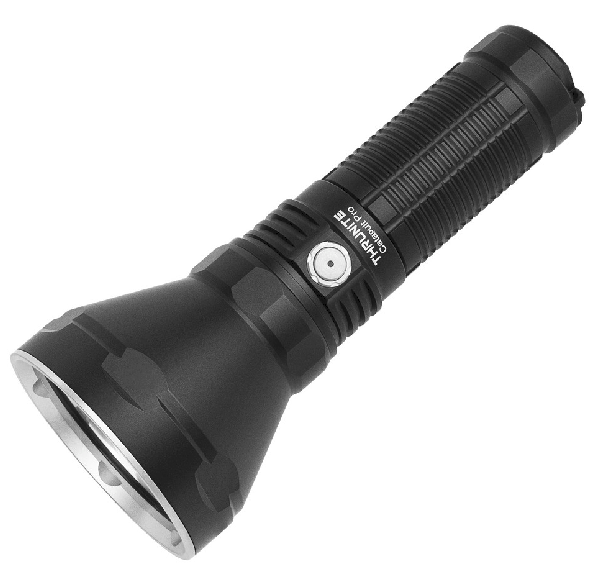
Latest update: 5/1/23
As with most other subjects, were you to get one hundred people in a room and ask their opinion about flashlights, you would have a minimum of 99 opinions. With that in mind, I will provide this page as a summary of my opinions on the things I find more important when it comes to flashlights.
A very good source for information on high output flashlights is Candle Power Forums(CPF). DO keep in mind that their main area of concern is for HIGH OUTPUT flashlights. As such, if your idea of a "good" flashlight is the one you can find at Radio Shack for $1.99, you will not find CPF of much use.
The first item for you to think about in the purchase of a flashlight is your use. If you want something to keep around the house "just in case" the power goes out and you need to traverse the house without stubbing your toe on the furniture, the Radio Shack $1.99 is a good choice. Just remember to change the batteries at least every other year! On the other extreme, if you have a LARGE backyard that has four legged visitors you need to deter, a much higher output light is in order.
Once you have a preliminary decision made on the relative output you want, the next consideration is the type of "bulb" the flashlight will be using. The old time standard of incandescent, still works just fine, IF you do not need high output. If you want to get to really higher output then you need to seriously consider Light Emitting Diodes (LED) as your choice of emitter (read that bulb).
The relative output and efficiency of the LED emitter has been changing at an almost exponential rate in just the last few years. In fact, the "high output" LED of just last year is now considered less efficient. Do you really care? The harder you use your flash, the more important the light output and efficiency become. - - - - - Main point, just get one that handles your need and don't worry.
A very important item to consider is the type of battery your new flashlight will use. The quite old, yet very reliable (and HEAVY) alkaline battery has done yeoman service and will continue to do so for the foreseeable future. They are, however, quite heavy, but they are relatively inexpensive, and last a long time. The other choices are Nickel Cadmium (NiCad), Nickel Metal Hydride (NiMh), Lithium (Li), and Lithium Ion (Li-Ion). Each is an improvement in performance over the previous, but at a perceptible increase in cost.
The batteries noted above are divided into two categories; Primary, or NON rechargeable - the Alkaline and Lithium (not to be confused with Lithium ION), and Secondary, or rechargeable - Nickel Cadmium, Nickel Metal Hydride and Lithium Ion.
The old alkaline is NOT RECHARGEABLE! If you try to recharge them they will, at minimum, leak all over the place, and some may explode. DO NOT try to recharge a primary cell!
While we are on the subject of batteries doing things you really do not want them to, the Lithium-Ion is quite sensitive about operational and storage temperature. If you live some place like the Arizona desert, where you can easily experience temperatures above 115 degrees, DO NOT leave a battery or battery in a flashlight in your vehicle. Temperatures in the vehicle (during the Summer [over half of the year]) can and will exceed 150 degrees F. That is more than enough to cause the battery to explode/catch-fire.
There are SIGNIFICANT differences in the care and feeding of the various types of rechargeable batteries and that information, at lest for now, is beyond the scope of this web page. - - - I will, however, make note of one SIGNIFICANT difference between rechargeables. The Li-Ion rechargeable used for flashlights have a SIGNIFICANTLY higher output voltage than either the NiCads or NiMHs. NiCads are 1.2V per cell at full charge. The Li-Ion at full charge is 4.2V! Put a 4.2V cell into a device that is expecting 1.2V and can you say SIZZLE?! Just take care.
One other point while we are in batteries: The Lithium Ion (rechargeable) does not use the same naming standards as Alkaline, et al. The Li-Ion battery is known by its size (in mm). For example: The AA size we all know is a 14500; 14mm diameter, 50mm tall and the last zero says cylindrical in shape. The double CR123A battery is the 18650, or 18mm diameter, 65mm tall and cylindrical shape.
One last item on batteries. Specifically the AA non rechargeable ones. I have lost more than one flashlight because I did not check the battery EVERY year, or possibly more often. They have a propensity for leaking and creating corrosion in the flash. If your use is not enough to make you replace batteries every six months, at least check them. When you find the corrosion as it starts, you save the cost of the flash. Almost a P.S. to that, the ones I have had problems with are "major" brands and not just the el cheapo ones.
Chargers for Li-Ion rechargeable batteries must be well regulated (see the article from Battery University). I also suggest, if you decide to go with Li-Ion batteries, that you get "protected" cells. They are more expensive, but well worth it in the long run. Battery University has an overview of the Li-Ion batteries with some of the cautions mentioned. Candle Power Forums have more information but some of the people there are more paranoid than necessary. All that said, there is one flashlight that does REQUIRE unprotected cells. They are the Emisar series. A GOOD quality unprotected (read that as from Japan) and a GOOD quality charger removes most of the hazards of UNprotected cells.
For Li-Ion cells, the "gold standard" for chargers was the Pila. Since few are ready to pay over $50 for a two slot charger the next best seems to be Nitecore chargers which range from $14 to around $28, depending on the number of cells you can charge at one time and many other features. The Nitecore are constant voltage chargers (really good for Li-Ion cells), but some models can be set to constant current.
As technology progresses we find that there is a charger that fits between the Pila and Nitecore in price, but is very close to the Pila in quality and features. That is the Opus BT-C3100 which runs a bit under $40 at Amazon.
One last item on rechargeable batteries: Each of them will/do self discharge. That is to say their charge diminishes while "on the shelf". A NiCad will discharge at about 1% per day! That means a fully charged NiCad, just left "on the shelf" for 90 days will effectively be 90% discharged. A NiMh self discharges at about one-half to one-third the NiCad rate.
The Li-Ion rechargeable will self discharge at a significantly lower rate. I have read that they will shed about 10% of their charge in a month to six weeks. After that the self discharge is much slower. Mine will hold very close to 90% charge for three months. In fact, they may be better than that, but three months is the longest I have tested them to. BIG difference there.
I guess it is not the last item. Panasonic eneloop has a relatively new AA (about two years now) that is rated to recharge 2100 times (I'll bet that is a tad optimistic) and shows a specification of holding 70% charge for . . . 10 years! It also has a rated capacity of over 1900mAh!! Now THAT is a significant improvement!! Time will tell. If they do, it will be REALLY nice. ;-)
I came across a web page with a significant amount of information on the care and feeding of the AA battery. It includes information on charging, storage, a bit on use, and a lot of just plain out good reference information. AA care and feeding. I'll add that if you are thinking of UNprotected cells, PLEASE pay close attention to his material. :-)
Just like cars where you have Ford, Chevy, Dodge, Nissan, (etc, ad nausium), there are many many different brands of flashlights. The one item that I find most important in selecting a brand of flashlight, is your intended use. If you are going to use it daily and "most strenuously" (such as the Police do) then Streamlight or Maglight are excellent choices. The currently most viable units, at least for my type of use, seem to come from Nitecore.
I have more than one Streamlight and they are a good product. The primary objection that I have to their product is the type(s) of battery you need for them. The better of their line run on either CR123 (at $2 to $3 each) that provide you with about one hour of service, OR rechargeable Nickel Cadmium (NiCad) batteries that run from $4 each to as much as $20. Do remember you will need to learn about the care and feeding of NiCads, should you decide to run Rechargeable NiCads. - - - I find Streamlight to be very usable, but far from optimal.
Maglights are, again, a very durable light that comes in many configurations. I think every one of us has seen the TV program COPS and the primary light of choice is Maglight for larger ones and Streamlight for smaller ones. If you are willing to put up with the extra weight, a Maglight, with LED conversion ($20, if not included in the initial purchase price) is far from a bad choice. In fact if you want a super durable light that will last and last, a Maglight with LED conversion, in three or four cell alkaline configuration is an excellent and comparatively inexpensive choice.
The assortment of Maglights available is nice, but some are only marginally useful. For example, the Mini-Maglights are in the low output range and even with LED emitters are still not very efficient, nor convenient to use.
I just came across a Maglight that I had not seen before. Specifically the ML300LX, which I got for $48. It comes in two or three "D" cell units with 100 Lumen difference between them (3 cell = 624L). It operates with the standard Maglight user interface, but in place of just the on/off on the switch, you have High, Med (they call it low), and Low (they call it Eco). They have four user selectable modes, and strobe is one of them. For a standard three D light, this one is impressive! Yes it is Maglight heavy, but it is rated at 16 Hours of use on High. Like I said, impressive!
The MANKER T01 runs on almost any flavor of AA battery and, naturally, varies the lumen output accordingly. An Alkaline AA (1.5V) will generate 500 lumen(!) on the highest setting, while a rechargeable Lithium Ion 14500 (3.7V) will put out 900 lumen! They are three and one half inches tall, with a barrel diameter of eight tenths of an inch and a bezel diameter of one and one-eighth inches. Quite small and VERY bright. The T01 is now about $50
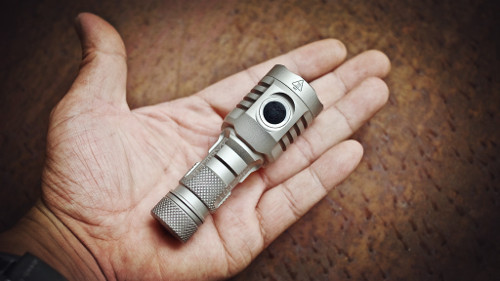
Here we go again. Manker has another one that is rated at 1300 Lumen, and is "focused" at 700M (Yes Virginia, 700 METERS)! They recommend that you use 26650s rather than the 18650 because of the additional current draw. The good side is that it sells for $65! It is the Manker U21. Got mine and am REALLY impressed with the amount of light (lowest setting is 15 Lumen). At the lowest setting, it lights up the STOP sign at the end of the block and on High (not turbo) it lights up the building a block away!

I just ran across the Nitecore EA41 that I got from Amazon for $45.
It is rated at 1020 lumen, but I think that is overly optimistic. I
would guess at more like 750 to 775 lumen on turbo, but the remaining
settings seem in line with their ratings.
It runs on four AA batt's
but will NOT handle the Lithium-Ion 14500s (excess
voltage). It is a larger diameter light (about 1.5 inches by 4.5 inches)
but still is easy to hold. Output is significant and has five settings
from ONE lumen to, as I said above, about 750 lumen, just about evenly
spaced. Well worth a look-see.
Speaking of not full output . . . I was thinking about the difference in output voltage of Alkaline cells (1.55V new, 1.5V for a long time after) vs the rechargeables which run 1.25 off the charger, then drop to 1.2 volts for most of the usable life. Four times 1.5V is 6V for the alkalines. Comparing that to four times the 1.2V for rechargeables which is 4.8V, and that voltage difference would account for the lower than specified output. Any bets?
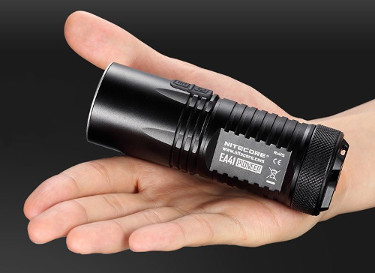
DANG if they didn't come out with another high output relatively small flash. The EC4GT is the limited edition of the EC4 series and is AMAZING! The difference between the various selections in that series is cosmetic AND the focal length of the beam. The "shortest" focus length is 300M and the GT version is 475M (that's just over 500 yards for us non metric people). Brighter than the EA41, but the same UI, which I find very nice. This one runs on a pair of 18650 or four CR123 batteries. If you can handle 18650 batteries and could have only one, LOOK CLOSELY at this one. Taint inexpensive ($76 delivered) but significant output (AND it comes with a nylon holster).
You can drop the bling (color bezel) and cut your price by ONE THIRD!
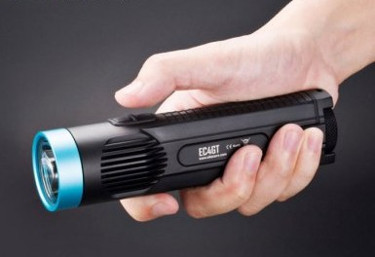
The "S" is a "AA" only version of the EC4GT, runs from $60 to $85,
depending on where you get it (I found five different prices on Amazon).
1000 Lumen on Trubo, 6.7" tall, WILL tail-stand, Switch is the standard
Nitecore (side of head, one on-off the other for level set) Runs on
standard AAs or rechargable AAs (but NOT 14500) and has a focal length
of just over 400 meters (just under 450 yards)!
Brightness levels:
1L, 45L, 210L, 430L and turbo of 1,000L
Can you say anything from firefly to BRIGHT!?
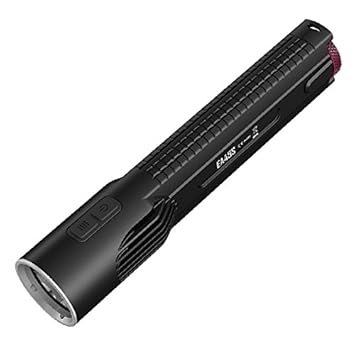
For a pocket sized MAJOR output light, look at the Nitecore MH20GT.
THIS is my favorite small light!
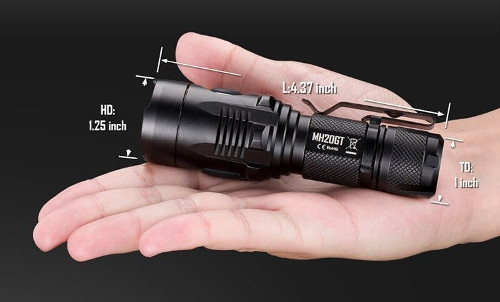
The MH20GT will run from $70 to $100 depending on where you get it. You can count on 1,000 limen output with various blink settings, to suppliment the low, medium, high and turbo modes. It runs on the 18650 battery (3.7V) and is water resistant to 1.5 meters. EXCELLENT little light (wish I got a commission).
You can also charge/re-charge it with the supplied USB to miniUSB cable. That means to can use a desk top charger or re-charge it in your car (with proper 5V USB source).
The P30 is a more user friendly version of the Manker U21. Currently selling for $65, it uses the 18650 battery (or 2xCR123) and has a TIGHTLY focused beam rated at 678 Yards! Almost a white laser. It is rated at 1,000 Lumen, has the tail cap on/off switch, but uses a side of the head, output adjustment.
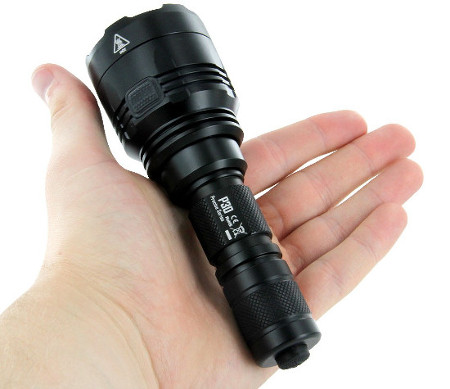
The Emisar D1S is very similar to the Nitecore P30 except that the button push is MUCH shorter, if you want it to "remember" where it was set at the last time you used it. Add to that, the highest output is 1300 (YES, thirteen hundred) lumen, and it is about a half inch shorter.
Web page for the D1 and D1S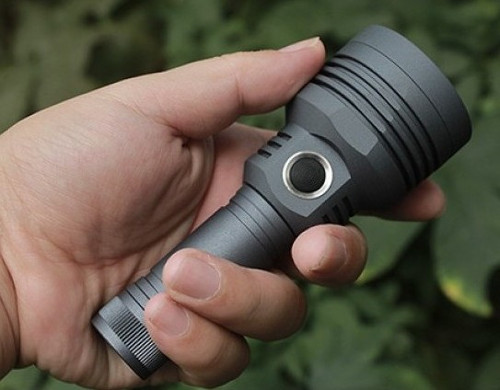
This one is new to me but is really nice. It has 1700 lumen (YES Virginia, seventeen hundred) output, with a throw rated at just over 800 yards. It is . . . just . . . a little taller that the Emisar D1S (eighth inch) with a slightly larger bezel. It throws as much on high (not turbo) as the Emisar does at full output. The one thing I REALLY like is that you adjust the output only when the light is on, and not as you turn it on like the Emisar. That's a plus for me.
It comes with the battery included, plus charging cord(USB), plus a nylon "holster". Currently there are several sources that will put it at your door for $75.
I have been using mine since mid February ('19) and am VERY impressed. I was using the Emisar D1S for the amount of light it produces and the throw. The Catapult V6 has virtually as much on high (not turbo) and has a better throw. While the Emisar D1S is perfectly matched in heat generation and heat dissipation, I have yet to use the V6 to a point where you even notice the heat generated. Costs twice what a D1S runs, but you do get better performance and a more useful (to me) UI. If you need a flashlight with HUGE output and long throw, look closely at a V6.
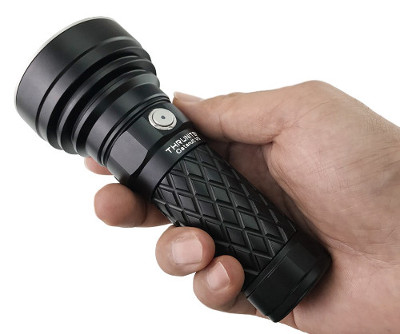
This is a perceptably smaller version of the V6, but still puts out a hair shy of 700 Lumen, and a rated throw of just over 500 yards. It is currently $50 at Amazon.

WOW!! This one is just a bit taller at 1" more than the V6 but
has IMENSE output (2,700 lumens). You got it, 2,700 lumens!
The throw is rated at one THOUSAND Meters! Another way of saying that
is TWICE the output of a HUGE output V6. Current cost at Amazon is
$90! - - - -
I'm IMPRESSED!

If you have been looking at the "output" ratings of various flash lights you will find many differences, based on how the manufacturer rates his product. Some will just say "Lumens", which usually indicates the "input". The output lumens are less than the input. While that may sound a bit confusing, the difference is in the efficiency of the LED itself, or how much power is "lost" converting the electrical energy to light.
You will find that some of the manufacturers hedge their bet by providing a Lumen rating and following it up with an "ANSI Lumen" rating. The "ANSI Lumen" is, for all intents and purposes, also known as the Out The Front (OTF) Lumen. IT is a measure of what you can expect to be usable light.
This is marketing at its worst. The manufacturer wants his product to sound like it is big and mean, so many of them will use the larger number (roll eyes). Fortunately, many of them are coming to understand the viability of a "usable" number.
Many people think the cost and maintenance considerations of a 1000 lumen light are not worth it. They "have seen" a 200 lumen light so bright it was hard to use up close. Let's look at how we can better understand the factors involved.
There are two units you will want to know: 1) lumens 2) candela. Lumens are a measure of the total amount of light produced, where candela is the intensity of the light beam. Many years back the total light output was measured in candle power. That was great, when the total output was low enough that the comparison was valid. Once the Light Emitting Diode (LED) began to have significant output, candle power became meaningless. Would you really want to use a unit of measure that uses millions of a unit, when a much more meaning full one exists?
The third factor involved is the reflector in/on your flashlight. A shallow, wide mouth, orange peel surface reflector will tend to spread the light over a much wider area. Where a deep, smooth surface will tend to concentrate the light into a "beam". Remember, the light output for a given setting is fixed. You then either spread it out over a wider area, referred to as flood, or concentrate it into a narrow beam, usually referred to as throw.
Which is best? That depends on how YOU want to use the flashlight. Some will now be thinking "why not both in one light"? As of this writing, the technology has not advanced to a level that allows both. Will it in the future? Your guess is as good (or maybe even better) than mine. For now, the advertisements on TV are there to sell product, misrepresented or not. I will say that I have yet to see an "adjustable focus" light that is worth having. Far better than none when the power goes out at night, but still not worth what you pay for them.
One last item you WILL want if you make the excursion into high(er?) output flashlights is lubrication for the tail-cap threads and the "O" rings that maintain the water resistance. The one that I have found to be the most efficient and easiest to obtain, yet relatively inexpensive, is the 3oz. tube of Super Lube. That is about a five year supply, but for $7 to keep everything working properly, and save "O" rings, that seems inexpensive to me. - - - Let me add a note here. The price of a tube of Super Lube varies by where you get it AND sometimes the time of year. When I posted the above link the cost was $6.99 and today that cost is $4.99. NICE to see the price of something going down, but I would not want to bet on it staying down. (roll eyes)
In doing my research on various configurations and brands of LED lights I find that there are a veritable plethora of brands that have strobe modes included. To me, that is nothing but an annoyance that you have to "click through" to get the durned light shut off. How many of us need a strobe function? And of those that do, how often do you use the strobe, compared to how often you just want to shut the light off? To me, that is unnecessary garbage.
The above holds true for a large number of older lights. One new model, the Nitecore EA41 (and others I'll bet) give you one button access to the strobe AND one push of one button to shut it off. That "one press" on or off, removes much of my aversion to strobe. If you like it, have a ball.
Some of the more inexpensive sources for LED lights are directly from CHINA! Unless you want someone in another country to have your credit card information, take care.
I almost said to use PayPal, BUT I had a real problem with them. I was double charged for one transaction and had to really raise holy ned to get a refund of the overcharge. Finally got it and promptly forgot about it. UNTIL today. I just received an E-mail scam FROM PAYPAL that had the total dollars of the over charge and said that they are ready to process the refund . . . . . Except that I had to provide them with a laundry list of my banking information, "so they would know it was me". I used some impolite terms in telling them what strange and unnatural acts they should do to themselves. I doubt I will hear from them again, but HOW DID MY INFORMATION GET OUTSIDE OF PAYPAL?!
BE CAREFUL!
There are a plethora of other opinions about brands, types, costs, etc. One that I found that has quite a bit of GOOD information is from REI and you may want to read what they have to say. ;-)
High output flashlights are far from inexpensive. Do you - really - need one? That is your decision. I like them and finding the one(s) that are the least expensive, yet excellent functionality/durability has been fun, even if a bit expensive. I hope my experience will be of use to you.
I have had "more than one" incident during after dark walks, where a really bright flashlight has kept them memorable, rather than problematical. If you are out after dark, a good flashlight is worth every penny.